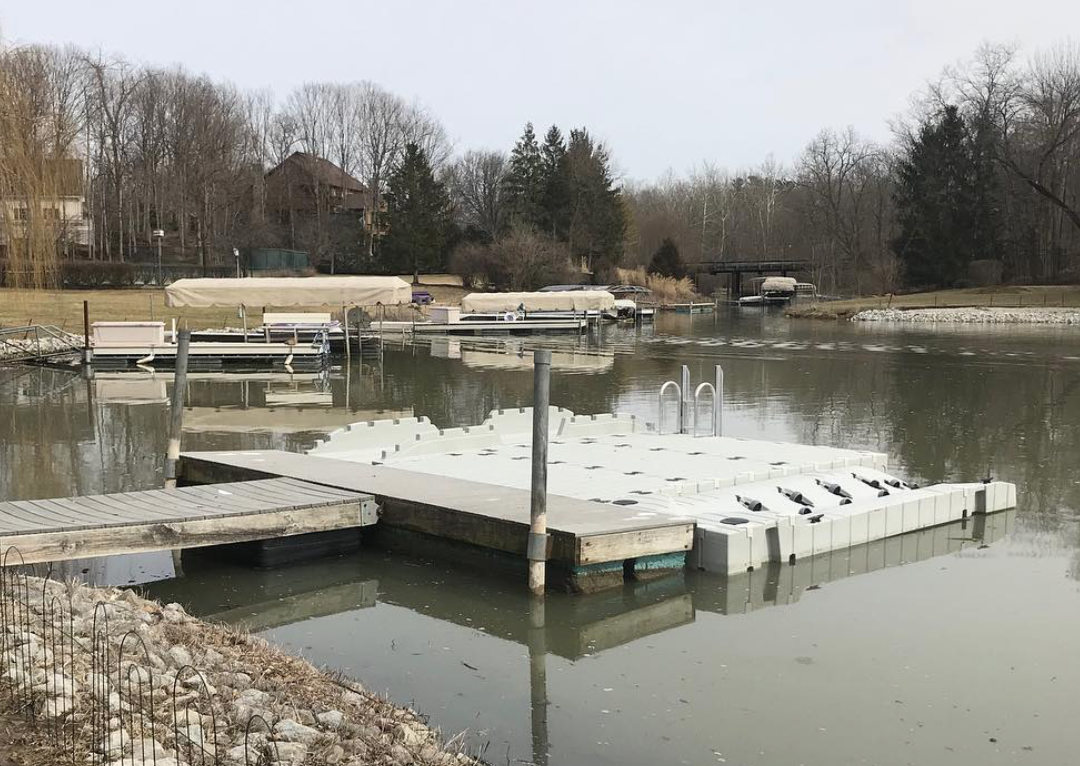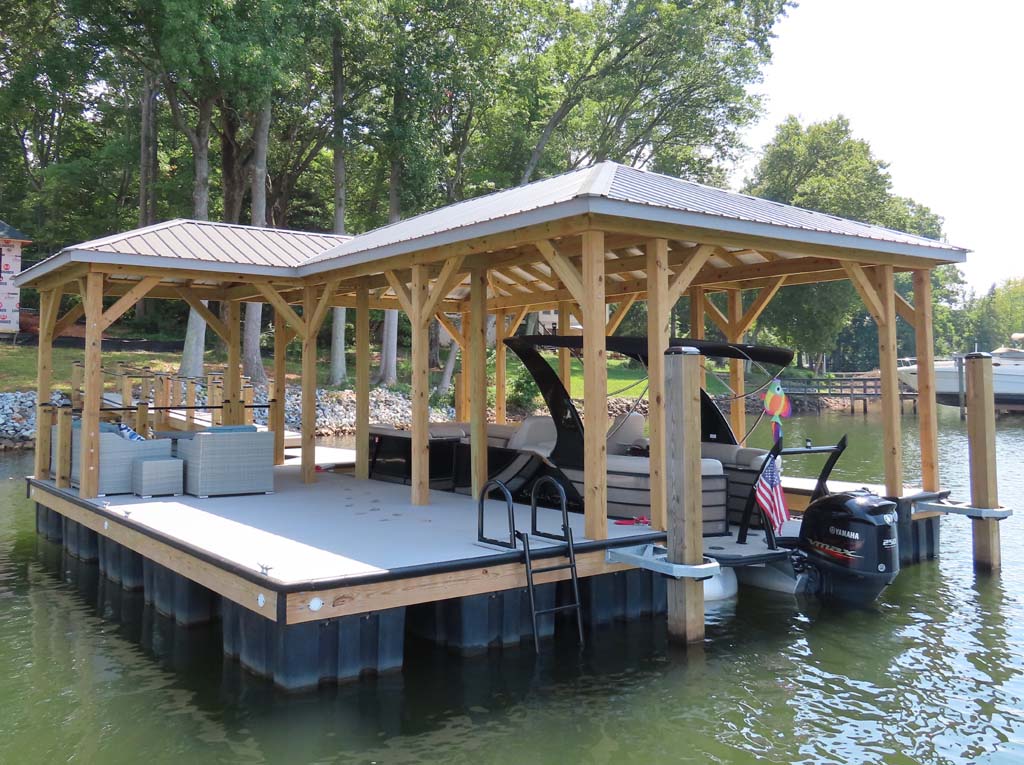Why Regular Maintenance Can Minimize Future Dock Repairs
Why Regular Maintenance Can Minimize Future Dock Repairs
Blog Article
Just How to Address Common Dock Fixing Issues for Safe Water Activities

Identifying Common Dock Issues
Identifying usual dock issues is essential for keeping the capability and security of your waterfront residential property. Regular assessments can aid uncover problems before they end up being severe, making sure both the durability of the dock and the security of those that use it.
One more common problem is the destruction of flotation protection devices. These devices are vital for maintaining the dock buoyant, and any type of damage or leaks can trigger the dock to checklist or sink. On a regular basis examining for leakages or waterlogged floats can preempt more significant concerns.
Additionally, algae and barnacle accumulation on the dock's surface can produce hazardous and unsafe problems. This biofouling not just presents a risk to users but can also increase the wear and tear of the dock products.
Finally, checking for signs of corrosion on steel components is crucial. Corrosion can jeopardize the integrity of the dock's framework, making it harmful. By consistently determining these typical dock issues, you can make certain that your dock continues to be safe and secure and useful for several years to come.
Repairing Rotting Wood
When addressing the issue of rotting wood on your dock, it is necessary to act quickly to stop more damage. Begin by completely inspecting the entire framework to identify all influenced locations. Make use of a screwdriver to probe the wood; if it sinks in easily, the wood is most likely decomposed and needs prompt attention.
Be certain to cut back to healthy and balanced, strong wood, guaranteeing you get rid of all jeopardized product. After removal, treat the remaining timber with a timber preservative to protect against future rot.
Next, change the eliminated areas with marine-grade lumber or pressure-treated wood, which are more immune to water damages. Protect the brand-new pieces with galvanized or stainless-steel fasteners to stop deterioration. Furthermore, using a water resistant sealer to the brand-new timber can offer an added layer of security.
Securing Loosened Boards
How do you ensure your dock continues to be useful and secure for all its individuals? One vital facet is safeguarding loose boards, which can or else pose substantial threats. Loosened boards not just enhance the danger of tripping but can also compromise the architectural honesty of the entire dock.

For reinstallation, make use of galvanized or stainless steel screws, as these products provide exceptional resistance to corrosion in marine settings. Make sure the screws are long enough to permeate deep into the underlying assistance framework, yet not as long that they protrude with the dock's surface area. Pre-drilling pilot holes can aid protect against the wood from splitting.
Lastly, maintain a routine inspection schedule to determine and deal with any type of new problems without delay. By safeguarding loose boards successfully, you add to the general safety and durability of your dock, making it a trustworthy system for water activities.
Supporting Unsteady Pilings
Making sure the stability of unsteady pilings is extremely important to preserving a practical and risk-free dock. Use a level to inspect for upright placement and ensure they are driven deep sufficient into the substrate to give ample assistance.
If the pilings are located to be unsteady, one effective technique for reinforcement is making use of additional bracing. Cross-bracing with dealt with lumber or galvanized metal can substantially enhance stability. Anchor the dental braces firmly to both the pilings and the dock structure to disperse tons uniformly.

Normal maintenance and periodic review of the pilings' stability are vital to making sure long-lasting dock security and capability.
Replacing Rusty Equipment
Dealing with unsteady pilings is just one facet of preserving a dock's stability; an additional vital issue is changing rusty equipment. With time, direct exposure to moisture and salt can lead to the oxidation and corrosion of screws, brackets, and bolts, jeopardizing the whole structure's security. Normal evaluation for rust is necessary, particularly after extreme climate or seasonal modifications.
When rustic hardware is determined, instant action is called for. Begin by find more selecting marine-grade stainless steel or galvanized hardware, both developed to stand up to the harsh aquatic environment. Make certain that you have the suitable devices, such as screwdrivers and wrenches, to safely remove the old, corroded items without creating further damages to the dock.
After eliminating the corroded equipment, extensively tidy the affected locations to remove any kind of residual corrosion or particles. Use a rust-inhibiting guide to subjected metal surfaces before installing the new hardware. Tighten all components securely to stop future loosening, and occasionally inspect the installations to guarantee ongoing stability.
Changing rusty hardware not just prolongs the dock's life expectancy yet also significantly enhances the safety and security of water tasks. By proactively taking care of rust, you shield both the structure and its individuals, making sure a safe and satisfying waterfront experience.
Final Thought
Regular examinations and upkeep are essential to resolve usual dock repair service issues and make certain safe water activities. Such positive procedures add to the total safety and security and performance of dock frameworks, promoting a secure environment for water-based activities.
Making certain the safety of water tasks pivots substantially on the appropriate upkeep and repair work of anchors (Dock Repairs). These devices are vital for keeping the dock buoyant, and any type of damage or slits can create the dock to list or sink. By consistently identifying these typical dock concerns, you can guarantee that your dock continues to be safe and secure and functional for years to come
Making certain the stability of unstable pilings is critical to keeping a useful and risk-free dock.Normal inspections and upkeep are necessary to address common dock repair concerns and make certain secure water activities.
Report this page